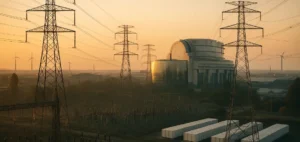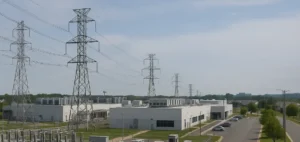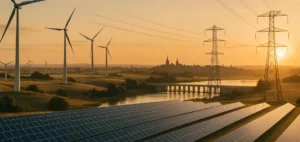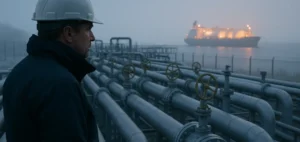To meet climate requirements and embark on an ambitious energy transition, French industry is expected to double its electricity consumption by 2050. According to a study by the think tank La Fabrique de l’industrie, recently published, consumption should reach 207 terawatt-hours (TWh), compared to 103 TWh recorded in 2023.
Replacing fossil fuels such as gas and fuel oil with electricity in industrial processes is central to this strategy. Energy-intensive processes, such as drying, fluid heating, or thermal treatments, will directly benefit from this electrification. However, some sectors face technological limitations. For instance, while electric furnaces are usable in the glass sector, they remain unsuitable for the cement industry. Cement manufacturers, faced with high thermal needs, are turning to alternative fuels such as biomass or used oils while relying on carbon capture and storage (CCS) technologies.
A shift in the energy mix
By 2050, electricity is expected to represent 62% of the energy mix in French industry, a significant increase compared to 37% today and 14% in 1970. This shift will be accompanied by a diversification of sources, including biomass, biogas, hydrogen, and waste.
However, this energy transition depends on several essential conditions. “This is not a foregone conclusion because affordable, competitive, predictable, and accessible electricity is needed,” warns David Lolo, economist at La Fabrique de l’industrie and author of the report. Unstable or excessively high pricing could undermine the competitiveness of French companies, particularly in a post-energy-crisis context where they seek stability and long-term visibility.
The role of long-term contracts
Energy provider EDF hopes to finalize new long-term supply contracts with industrial players by the end of the year. These agreements, meant to replace the advantageous system of Regulated Access to Historic Nuclear Electricity (ARENH), set to end in 2025, are considered too expensive by some industrialists. Having benefited from favorable tariff conditions for 15 years, they express concerns about their ability to absorb new costs.
Unequal territorial electrification
The study also highlights a risk of uneven electrification. Large industrial CO2-emitting basins such as Dunkirk, Fos-sur-Mer, and Le Havre may be prioritized, leaving more diffuse sites like glass factories in wine regions or rural cement plants behind. This delay is attributed to the complexity and scale of the work required to connect these infrastructures to the national electricity grid.
This disparity could slow the decarbonization of certain regions and raises questions about territorial equity in the energy transition. Investments in the grid, including cabling and pylons, will be critical to ensuring homogeneous coverage.





















